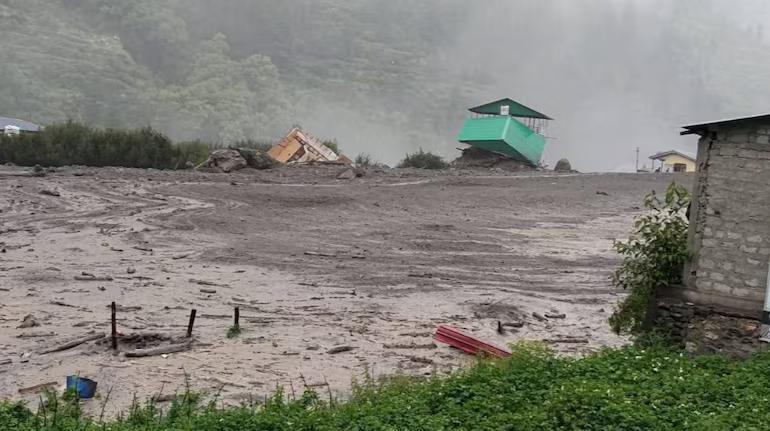
What are hanging glaciers, massive ice structures behind Dharali flash floods?
On August 5, the picturesque town of Dharali in Uttarakhand was struck by a devastating flash flood that left a trail of destruction in its wake. The flood, which was triggered by the collapse of a massive ice structure, has raised concerns about the stability of natural wonders in the region. Scientists have been studying the aftermath of the disaster and have made a significant discovery – hanging glaciers, a type of ice structure that is both fascinating and unstable, may have played a crucial role in the tragedy.
But what are hanging glaciers, and how do they contribute to such disasters? In this blog post, we will delve into the world of glaciology and explore the role of hanging glaciers in the Dharali flash floods.
What are hanging glaciers?
Hanging glaciers are massive ice structures that form high up on a glacier valley wall and extend only partway down, without connecting to the main glacier below. These glaciers are unique in that they are not attached to the valley floor and are suspended in mid-air, often at a steep angle. Hanging glaciers are typically found in high-altitude regions with extreme climate conditions, such as the Himalayas.
How do hanging glaciers form?
Hanging glaciers form when a glacier valley is carved out by the movement of a main glacier over thousands of years. As the main glacier advances, it scours out the valley floor, creating a steep wall on one side. Meanwhile, the upper parts of the main glacier, which are less affected by the scouring action, remain stationary and become trapped on the valley wall. Over time, these upper parts of the main glacier grow and extend downwards, forming a hanging glacier.
What makes hanging glaciers unstable?
Hanging glaciers are inherently unstable due to their precarious position on the valley wall. They are sensitive to climate change, which can cause them to melt or break off, leading to catastrophic consequences. There are several reasons why hanging glaciers are vulnerable to collapse:
- Temperature fluctuations: Changes in temperature can cause the ice to melt or grow rapidly, leading to instability in the glacier.
- Precipitation changes: Alterations in precipitation patterns can cause the glacier to grow or shrink, affecting its stability.
- Valley wall erosion: The valley wall can erode over time, causing the hanging glacier to detach and collapse.
- Glacier flow: The movement of the main glacier below can cause the hanging glacier to become dislodged or break off.
The case of Kheer Ganga channel
Researchers suspect that a hanging glacier feeding the Kheer Ganga channel triggered the August 5 flash floods in Dharali. The Kheer Ganga channel is a major tributary of the Ganges River, and its confluence with the river is a significant geological feature in the region.
According to a recent study published in the Journal of Geophysical Research, researchers have mapped 219 hanging glaciers in nearby Himalayan basins. This study highlights the importance of understanding the dynamics of hanging glaciers, which are critical components of the region’s glacial landscape.
Conclusion
The Dharali flash floods have raised awareness about the importance of monitoring hanging glaciers in the Himalayas. These massive ice structures are both fascinating and unstable, and their collapse can have devastating consequences. As climate change continues to affect the region, it is essential to study and understand the dynamics of hanging glaciers to mitigate the risks of such disasters in the future.
Source:






